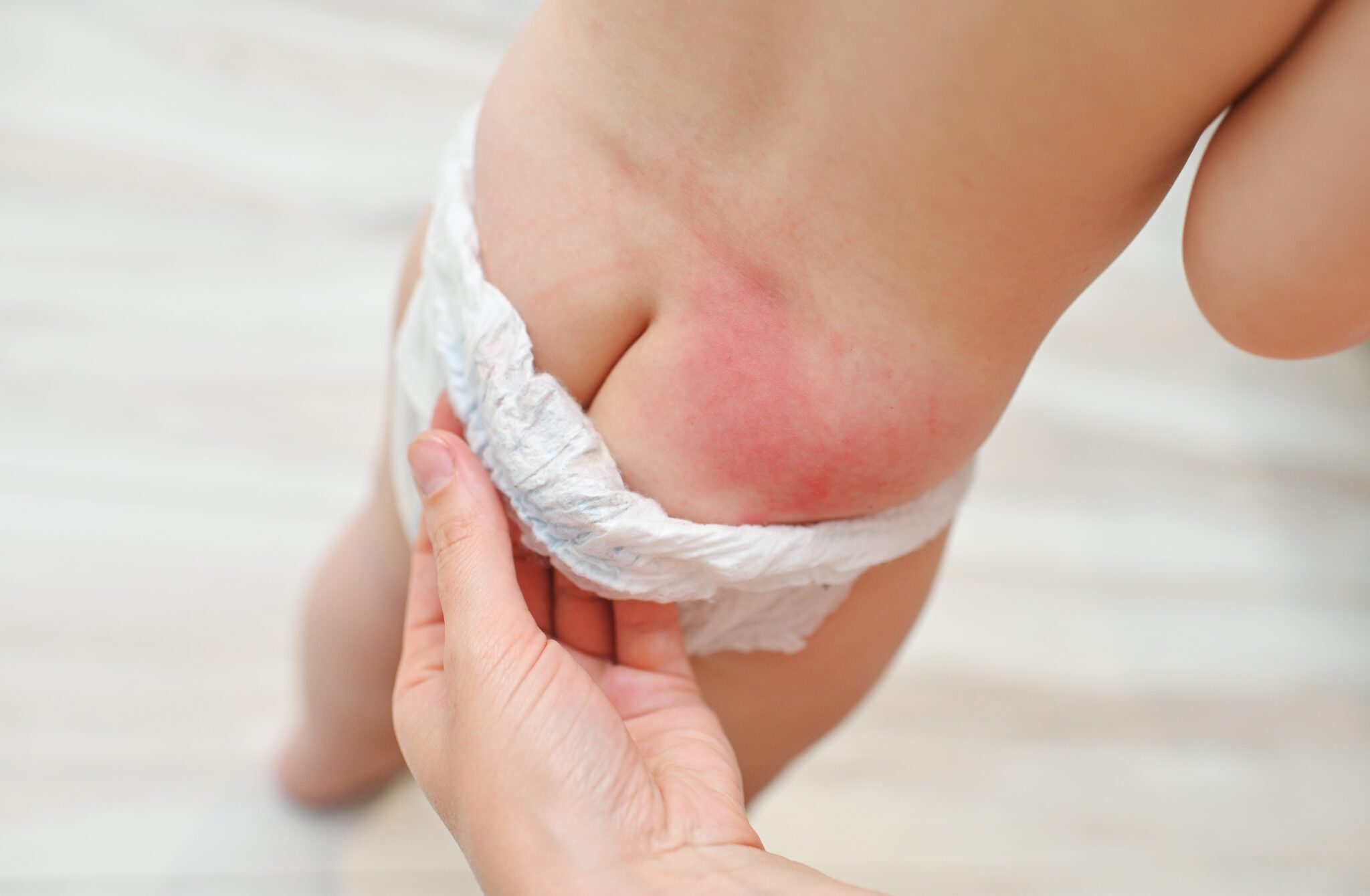Diaper Rash: Symptoms, Causes & Treatment
What are the symptoms of diaper rash?
Diaper rash is a common condition that can cause redness, irritation, and discomfort in the diaper area. The symptoms of diaper rash may vary depending on the severity of the rash, but common symptoms include:
- Redness: The skin in the diaper area may appear red or inflamed.
- Irritation: The affected skin may be irritated and sensitive to touch.
- Warmth: The skin in the diaper area may feel warm to the touch.
- Pain or discomfort: Diaper rash can cause pain or discomfort, especially during diaper changes or when the skin comes into contact with urine or stool.
- Bumps or pimples: In some cases, diaper rash may cause small bumps or pimples to appear on the skin.
- Peeling or flaking skin: The affected skin may peel or flake, especially as the rash begins to heal.
- Severe diaper rash: In more severe cases, the skin in the diaper area may become raw, blistered, or ulcerated.
It’s important to take steps to prevent and treat diaper rash to keep your baby comfortable and prevent complications. Keeping the diaper area clean and dry, changing diapers frequently, and using a barrier cream such as Vaseline, or ointment can help prevent diaper rash. If diaper rash persists or is severe, it’s best to consult a healthcare provider for further evaluation and treatment.
What are the causes of diaper rash?
Diaper rash can be caused by a variety of factors, including:
- Prolonged exposure to urine or stool: When a baby’s diaper is not changed frequently enough, the skin in the diaper area can become irritated by prolonged exposure to urine and stool.
- Friction: The friction caused by rubbing against the diaper, especially when the diaper is too tight, can irritate the skin and contribute to diaper rash.
- Chafing: Chafing occurs when the skin is rubbed against itself or against clothing, leading to irritation and inflammation.
- Sensitive skin: Some babies have skin that is more sensitive to the chemicals in disposable diapers, wipes, or laundry detergent, which can contribute to diaper rash.
- Yeast or bacterial infection: Diaper rash can be caused by an overgrowth of yeast or bacteria in the diaper area, which can occur when the skin is warm, moist, and irritated.
- Introduction of solid foods: When babies start eating solid foods, their stool may change, which can increase the likelihood of diaper rash.
- Antibiotics: Taking antibiotics can disrupt the natural balance of bacteria in the body, increasing the risk of diaper rash.
- Diarrhea: Diarrhea can increase the frequency and acidity of stool, which can irritate the skin and contribute to diaper rash.
- Allergic reaction: Some babies may have an allergic reaction to certain foods, diapers, wipes, or other products, leading to diaper rash.
Preventing diaper rash involves keeping the diaper area clean and dry, changing diapers frequently, using a barrier cream or ointment, and ensuring that diapers are not too tight. If diaper rash persists or is severe, it’s best to consult a healthcare provider for further evaluation and treatment.
What is the treatment for diaper rash?
The treatment for diaper rash typically involves keeping the diaper area clean and dry and using products to soothe and protect the skin. Here are some general steps you can take to treat diaper rash:
- Change diapers frequently: Change your baby’s diaper as soon as it is wet or soiled to reduce the amount of time the skin is exposed to urine and stool.
- Clean the diaper area gently: Use a soft cloth or baby wipes to clean the diaper area gently. Avoid using wipes that contain alcohol or fragrance, as these can irritate the skin.
- Let the skin dry completely: Allow the skin in the diaper area to air dry completely before putting on a new diaper.
- Use a barrier cream or ointment: Apply a thick layer of barrier cream or ointment to the diaper area to protect the skin from moisture and irritation. Look for products that contain zinc oxide or petrolatum.
- Avoid tight-fitting diapers: Use diapers that fit properly and are not too tight, as tight diapers can rub against the skin and worsen diaper rash.
- Give diaper-free time: Allow your baby to go without a diaper for short periods of time to let the skin breathe and heal.
- Consider using hydrocortisone cream: If the diaper rash is severe or persistent, your healthcare provider may recommend using an over-the-counter hydrocortisone cream to reduce inflammation and itching. Follow your healthcare provider’s instructions when using hydrocortisone cream.
- Consult your healthcare provider: If the diaper rash does not improve with home treatment or is accompanied by other symptoms, such as fever or blisters, consult your healthcare provider for further evaluation and treatment.
It’s important to continue with these treatments even after the diaper rash has cleared to prevent it from recurring. If diaper rash persists or is severe, it’s best to consult a healthcare provider for further evaluation and treatment.




